Quid Marketing

Introduction to the Blog Summary
This blog looks at how fashion conversations in 2025 reflect culture, consumption and style more than just seasonal looks.
Key Points Overview
Fashion is deeply intertwined with cultural touchpoints—music, food, travel.
Celebrity influence still drives emotional engagement in fashion.
Sustainability and streetwear have merged into one conversation.
Brick‑and‑mortar shopping holds stronger emotional value than online.
Visual storytelling (image‑first content) dominates engagement.
Top Takeaways
Think culture first: fashion isn’t just clothes, it’s lifestyle, identity and expression.
Celebrity moments are emotional levers—use them smartly.
Sustainability isn’t optional—it’s woven into style now.
Don’t ignore physical retail: the experience still wins hearts.
If your campaign isn’t visual‑heavy, you’re missing the moment.
Conclusion
Fashion in 2025 is about story and emotion, not just trend cycles. For brands, success means weaving into culture, not just dropping stylish product.
Call to Action
Read the full blog for data and examples. Then ask: how will your brand show up in style‑talk, culture‑talk and consumption‑talk—not just in product drops?
Fashion has always reflected cultural shifts, but in 2025, rather than responding to change, it’s driving it. From red carpet moments to capsule collections and cultural mashups, the digital fashion conversation is more emotionally charged, culturally interconnected, and behaviorally revealing than ever.
To understand what’s really fueling the conversation, we analyzed tens of thousands of fashion-related articles and social posts from May to July 2025. The result is a data-driven map of the most resonant fashion narratives across five dominant themes:
Let’s explore the story behind the signals.
Fashion is no longer a standalone conversation. It’s deeply embedded in adjacent cultural movements, especially global music, luxury travel, and culinary lifestyle.
Two prominent conversations in Quid’s network, “Global Music and Fashion Fusion” and “Evolving Dining and Travel Trends,” highlight this crossover. These aren’t the largest conversations, but they are outliers with unusually high engagement and connectivity.
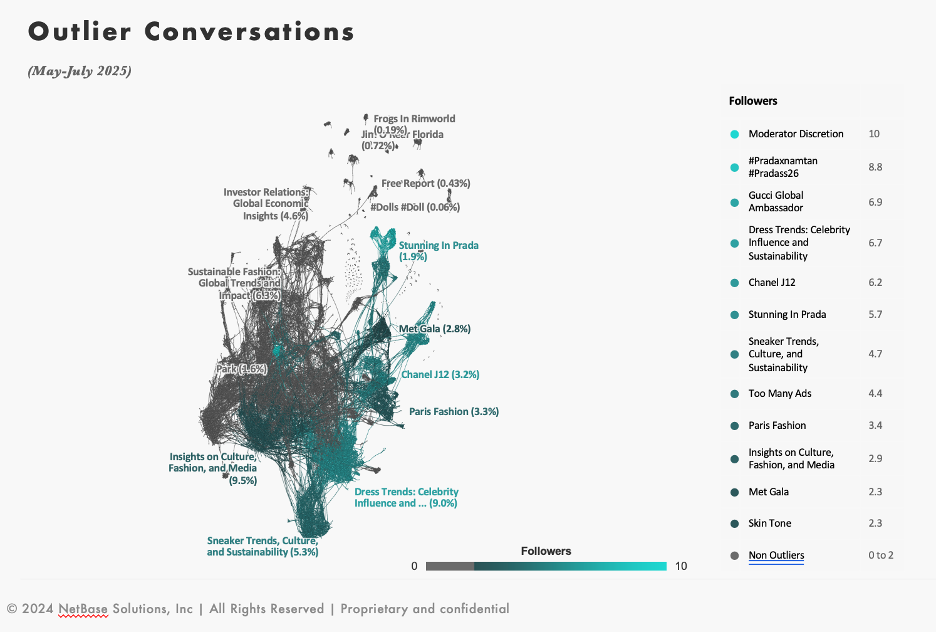
Outlier clusters punch above their weight. They may be smaller, but they spark disproportionately high interaction, making them culturally potent and highly shareable.
We also see this cultural fusion in how people talk about fashion. In the “Behaviors Driving Sentiment” data, verbs like “attend,” “recommend,” “support,” and “book” dominate, especially when tied to fashion shows, celebrity events, or brand pop-ups.

These aren’t passive consumers. They’re participants experiencing fashion through moments, not just merchandise.
Even as cultural crossover grows, celebrity influence remains the most emotionally charged force in fashion. The “Dress Trends: Celebrity Influence” cluster accounted for 9% of all fashion conversations from May to July, making it the second-largest in the network.
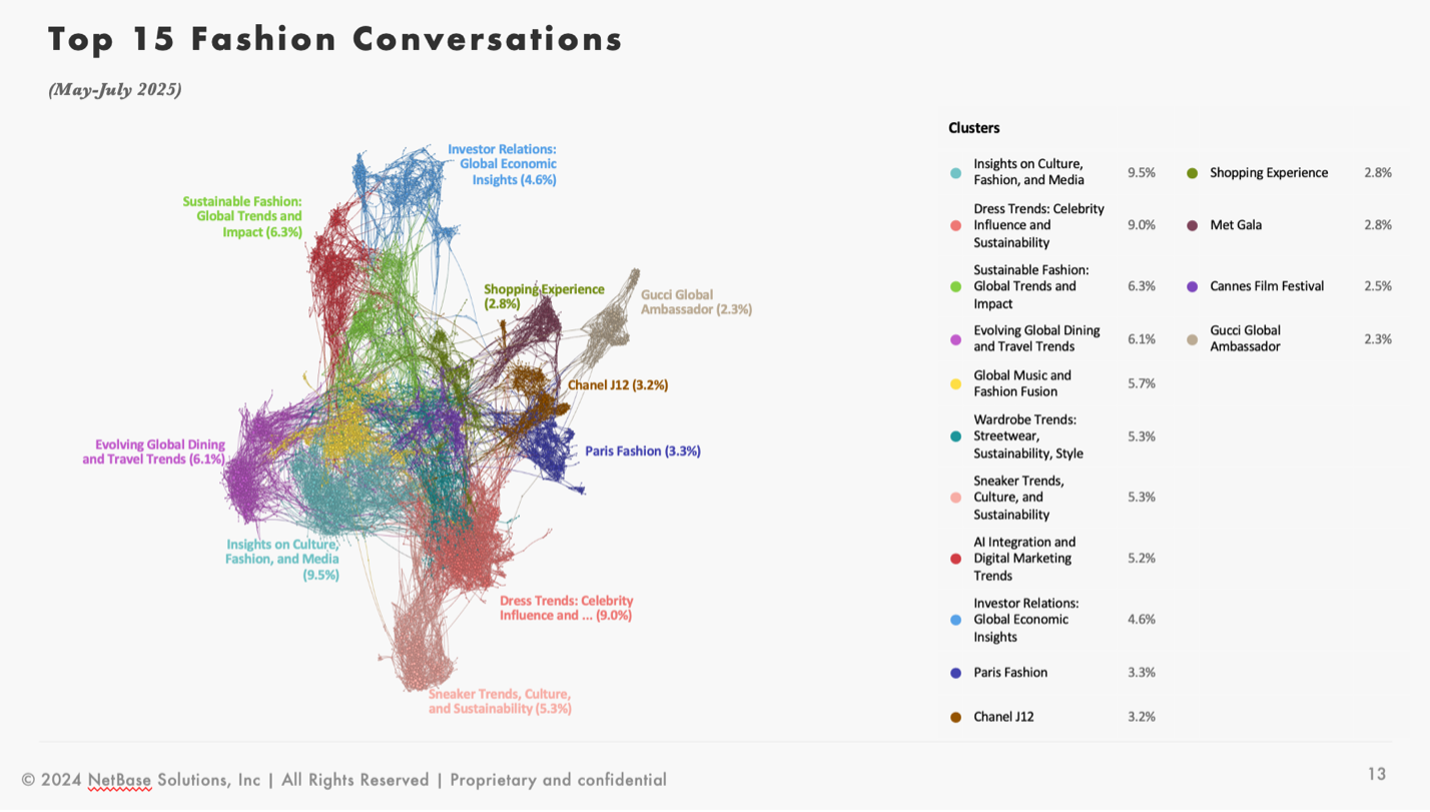
To understand what’s driving that size and sentiment, we looked at the top trending names and terms. These include:

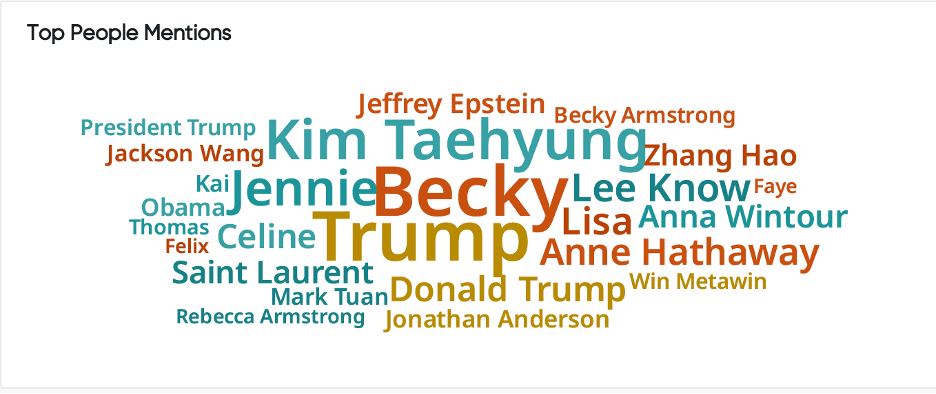
We see just how intense that emotional connection is in the “Stunning in Prada” conversation, which carries a 96% positive sentiment score, one of the highest across the network.
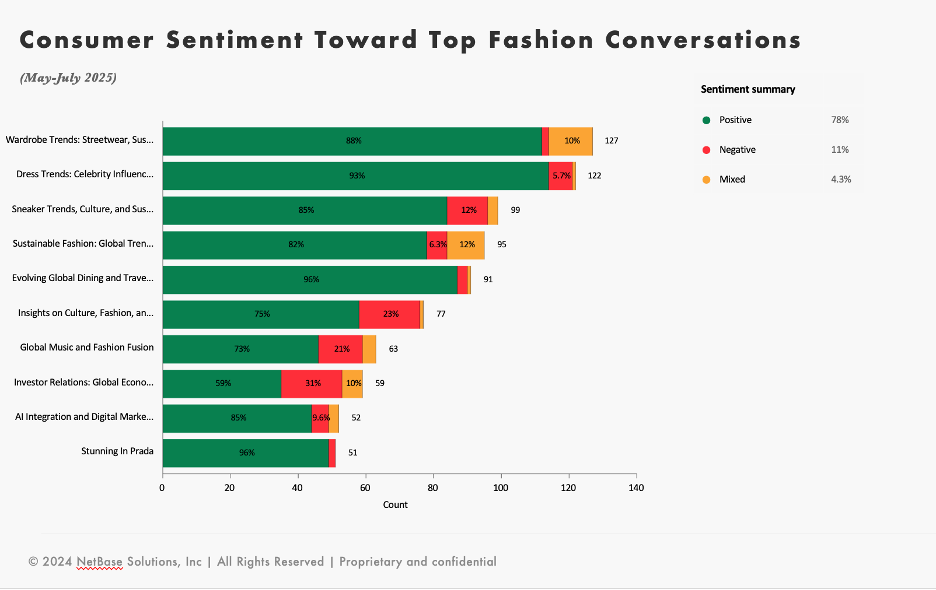
That level of sentiment aligns with emotional language commonly found across positive fashion posts—terms like “obsessed,” “gorgeous,” “perfect,” and “iconic.” These appear prominently in our emotional sentiment analysis and help explain the enthusiasm seen in celebrity-driven clusters like Stunning in Prada.

This offers insight into emotionally contagious cultural moments that brands can either ride or miss.
But the conversation is not all glitz and glamour . . .
The sustainability conversation has evolved. It’s no longer relegated to niche eco-conscious brands. It’s now baked into streetwear and sneaker culture, where identity, aesthetic, and ethics converge.
We can see this shift reflected in the language. In the Trending Terms chart, items like “graphic tee,” “baby tee,” and “fast fashion” are on the rise.

But the real story lies in how people are talking about those trends. Earlier in the post, we saw in the Behaviors Driving Sentiment analysis that users frequently use terms like “get rid of,” “throw out,” and “destroy,” often in connection with dissatisfaction with fast fashion or short-lived trend cycles.
This isn’t just trend fatigue; it’s ethical rejection. The hype cycle is evolving into a values cycle.
For brands, the implication is clear: your capsule may be cool, but it has to be conscious, too.
Yes, online fashion dominates in volume, but not in sentiment.
In our analysis, in-store shopping experiences carried a net sentiment score of 93, higher than both online and local digital options. This preference held steady across 2023 to 2025.

The data suggests that people still value tactile, social, and in-the-moment fashion experiences, especially when tied to discovery or self-expression.
It’s not about rejecting digital. It’s about craving intimacy and trust—the things that in-person shopping can still offer better than screens.
Though when considering screens, fashion lives in images.
In 2025, image-first content drove 11.3 billion engagements, far outpacing both video and text-based posts.
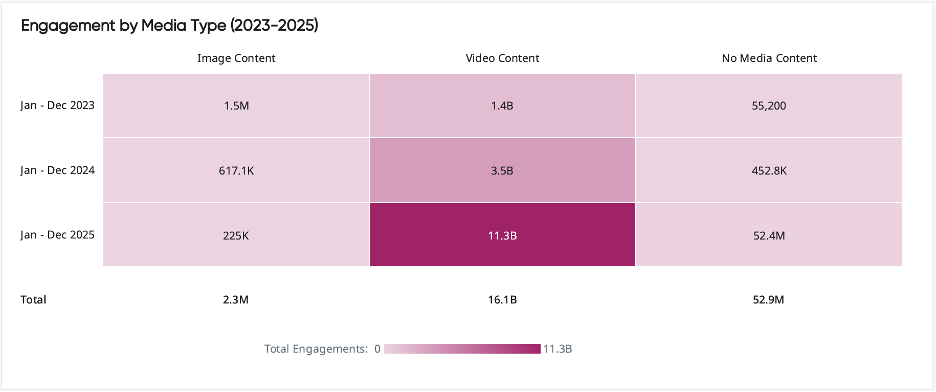
That number includes editorial, yes, but the real drivers are user-generated images, aesthetic moments, and visual storytelling that travels.
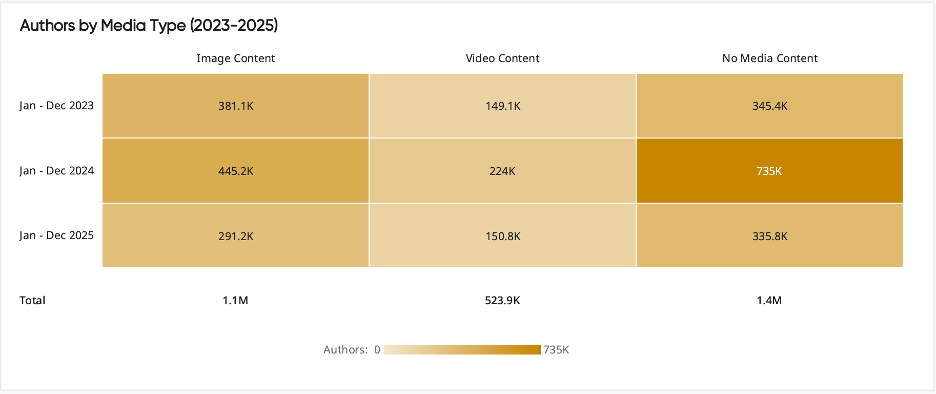
If your fashion campaign isn’t visual-first, it’s invisible. The scroll is the new runway.
Across all clusters, one thing is clear: fashion isn’t just about trends; it’s about emotion.
The Emotions Driving Sentiment data backs this up. Positive words like “love,” “favorite,” “cool,” and “gorgeous” dominate, but when things go wrong, the emotional backlash is just as strong. Terms like “shame,” “ugly,” “regret,” and “waste” show up in connection to failed launches, fast fashion fatigue, or poorly received campaigns.
Brands must understand not just what looks good, but what feels right. Because in 2025, style is story, and story is sentiment.
We can help you decode the deeper story behind the sentiment, so you can lead with cultural intelligence. Reach out today to learn more!